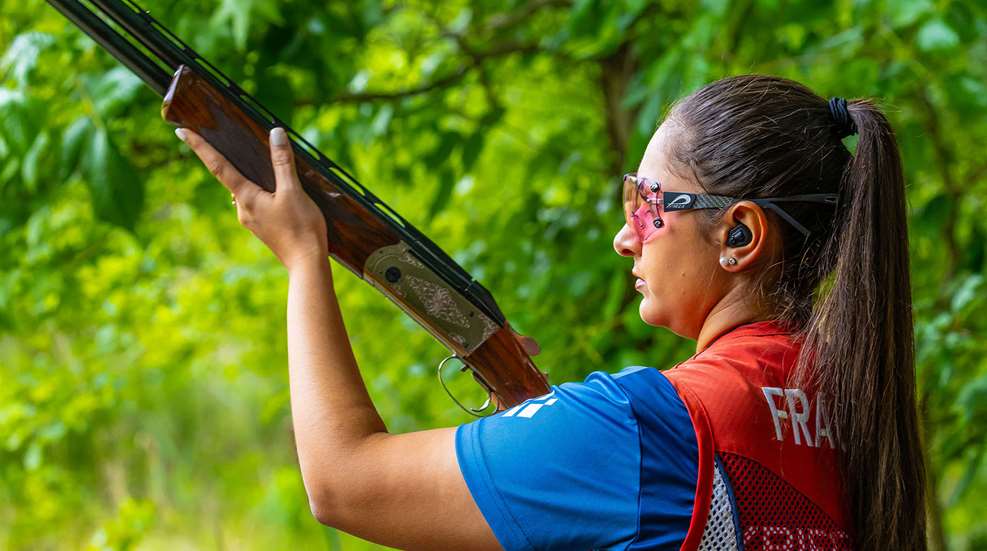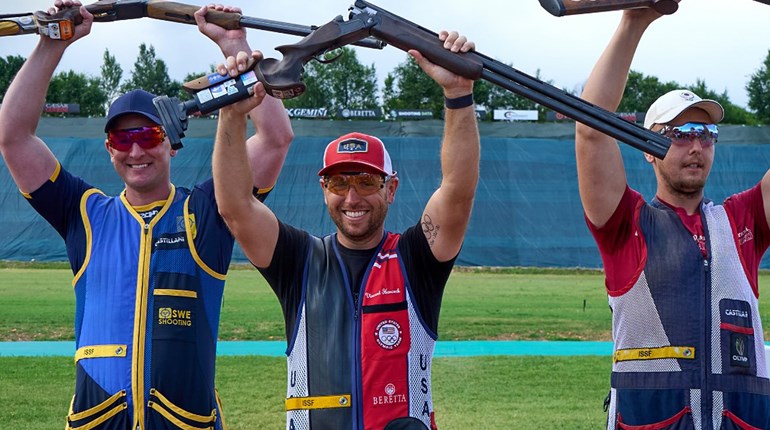
We’re smack in the middle of waterfowl season in most parts of the country, and if you’re struggling to hit as many birds as you’d like, you might be looking for some practice. The skeet field and the sporting clays course are great places to get some serious practice in, but although both games involve shooting moving targets, they can be a far cry from bird hunting. Try these specific tips if you’re going to practice with the intention of improving your wingshooting on real birds. And don’t forget to wear your hunting gear to the practice field, so you get used to mounting and swinging your gun while wearing a heavy parka.
Shoot Unmounted
Nearly everyone who shoots American skeet competitively does so by pre-mounting the gun before they call pull. This is obviously not an option in bird hunting, so to practice for fast-flying ducks or flush-in-your-face quail, try keeping the stock of the gun low when you call “pull.” International skeet rules require the stock to be held below a line on the shooter’s vest just below the armpit—you can try this position, or you can hold the gun even lower as you might when you’re crouched in a pit blind. If it’s safe and permitted by your club, you can even try holding the gun across your body as it would be when you’re walking through the fields chasing pheasants. This is going to cost you considerable time, which is a luxury skeet targets don’t necessarily offer, particularly on the middle stations with fast crossers, so expect a lot of targets to get away from you while you work on mounting and shooting faster. And again, make sure everyone on your squad as well as club management is cool with this technique before you try it.
This works in sporting clays as well, and in fact, an unmounted gun is required in FITASC, the French version of sporting clays that is quickly gaining popularity in the U.S. If your local club has a FITASC parcour (field), this can be a great way to practice unmounted shooting.
Ask for Random Pulls
While ducks and geese usually give you a chance to watch them and plan your shot, other birds, like pheasants and quail, give you no notice—they flush and you react as quickly as you can. To simulate this surprise shooting in practice, whether it’s skeet or sporting clays, ask whoever is working the button for you to delay the pull after you indicate that you’re ready. Ask them to surprise you with the target each time—sometimes pushing immediately, sometimes delaying one second, sometimes delaying five seconds (which will feel like an eternity). But building in a little element of surprise will help you rely less on what you already know that target is going to do and rely a little more on your own reaction time. This is especially effective when used with an unmounted gun at the call.
In sporting clays, you can ask the puller to surprise you with which target they’ll throw first, or to throw in a surprise double (both targets thrown at the same time). This can help you make split-second choices about what to shoot first, which is a dilemma you face all the time in bird shooting.
A word of warning: League night or tournament day is not the time to try this. This is specifically a training technique and is totally contradictory to how competitive skeet and sporting clays are shot. You will annoy everyone on your squad if you disrupt the rhythm of the shot sequence by asking for random pulls. Even a fun recreational day with your friends might not be an appropriate time to try this if your buddies are just out to shoot a round for fun. Save this for serious practice with one or two buddies who have the same goal as you—improving their wingshooting.
Be Surprised—Skip the Show Birds
In skeet, you know exactly what each target is going to do. In sporting clays, when you approach a new station, you don’t have any idea where the target will emerge from or where it will go and how fast it will fly. Instead of watching a couple of pairs of “show birds” to make a plan for how you want to shoot the station, try going in completely unaware. You might be able to see the traps, but otherwise, you won’t know until the targets are in the air whether you’re dealing with crossers, straight-away shots, curling chandelles, bouncing rabbits or something else. This is great practice for real-life bird shooting, where anything can happen.
Of course, this technique only works for the first pair of each station, so its application is limited, and you will not want to try this when you’re shooting in a squad who wants to keep score. They will want to see show birds and make a shot plan. This is, again, strictly a training technique unless everyone on your recreational squad is on board.
The 5-stand course can offer you a great way to accomplish the same thing, particularly if you forgo show birds here. Because there are so many traps, if you can avoid reading the “menu” of what targets to expect at each station, you’ll be continually surprised by what’s in the air, and the angles will always be changing.
Find the Targets You Need
Are you having trouble with a specific type of shot? Good news—there’s almost certainly a skeet station or sporting clays target that replicates that shot. If you’re struggling with fast crossers, try skeet from stations 3, 4 and 5. Trouble with higher overhead shots? Find the springing teal or from-behind tower shots on your local sporting clays course.
Skeet is great for incoming and outgoing targets (stations 1 and 7), and you can find just about any shot replicated on the sporting clays course—rising targets, falling targets, close targets, far-out targets, incomers, outgoers, bouncing rabbits, long looping targets that give you way too much time to anticipate them, and more. Don’t hog the station or get in anyone’s way, but if it’s a slow day at the club, feel free to skip around to the stations you want to work on. Just let other squads play through so you’re not holding anyone up. Then you can spend your time and effort on the shots you really need to work on—and once you feel like you’ve got that shot handled, start utilizing the other techniques here, like an unmounted gun and random pulls, to increase the challenge.















































